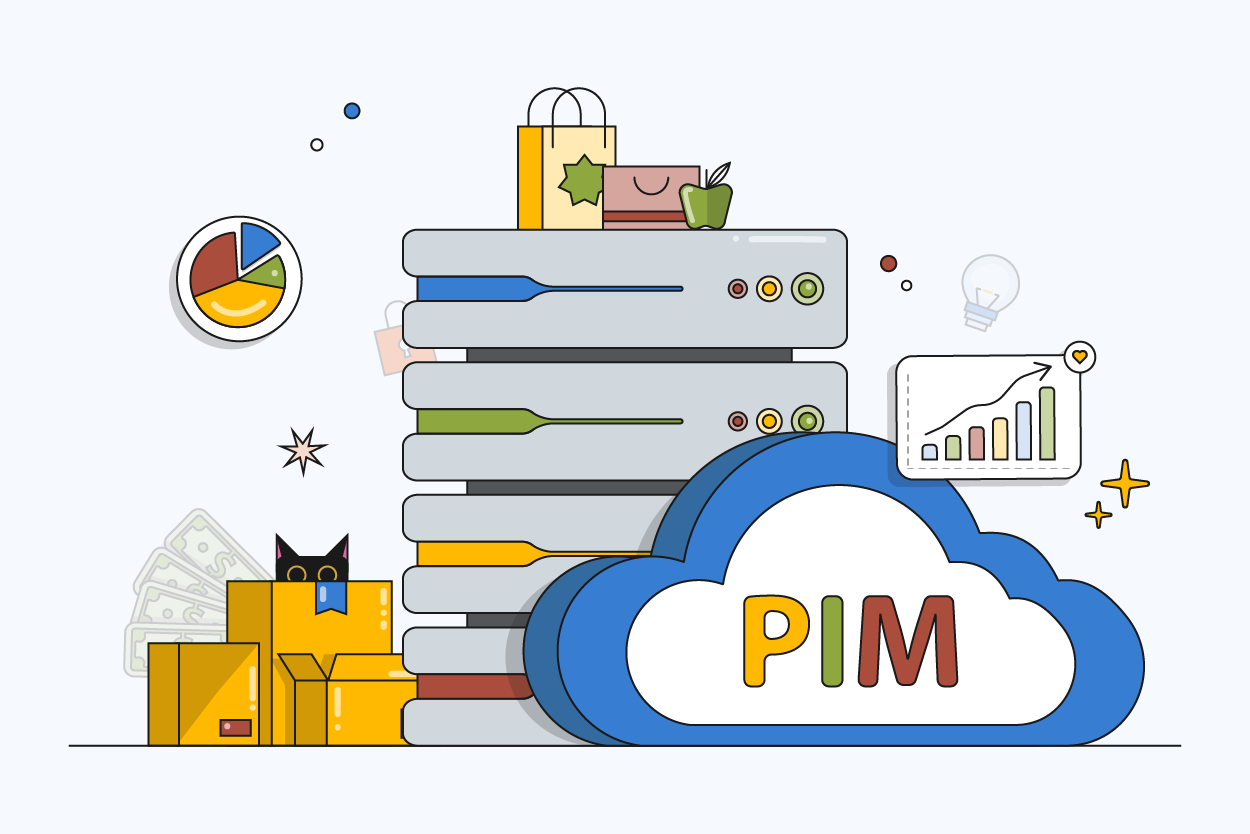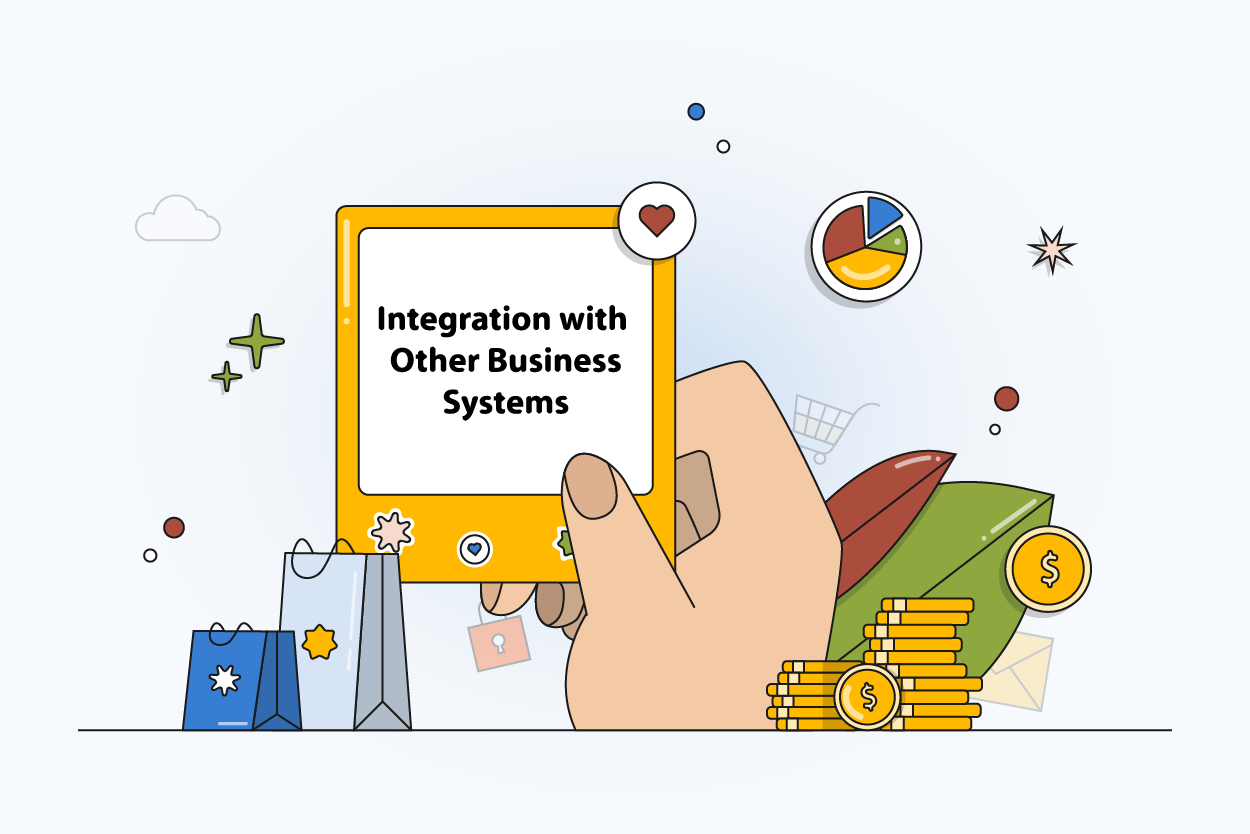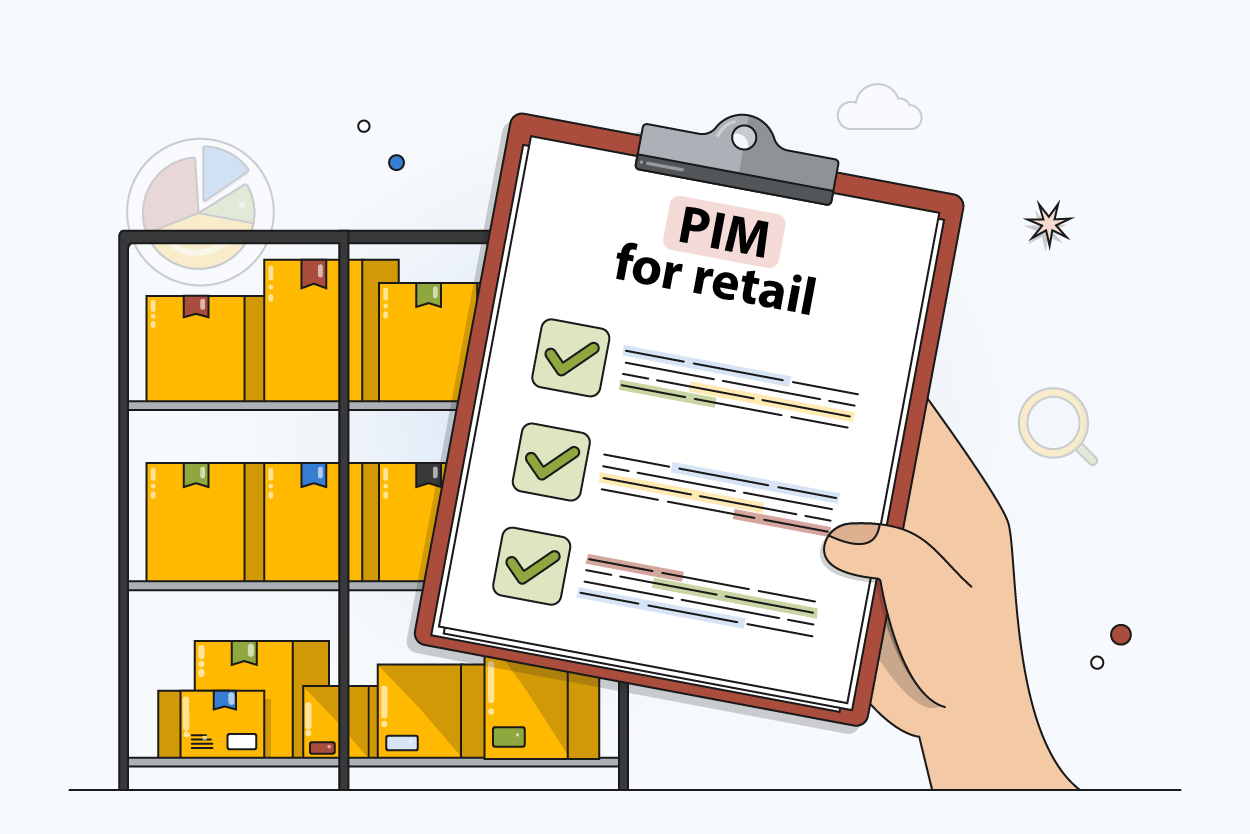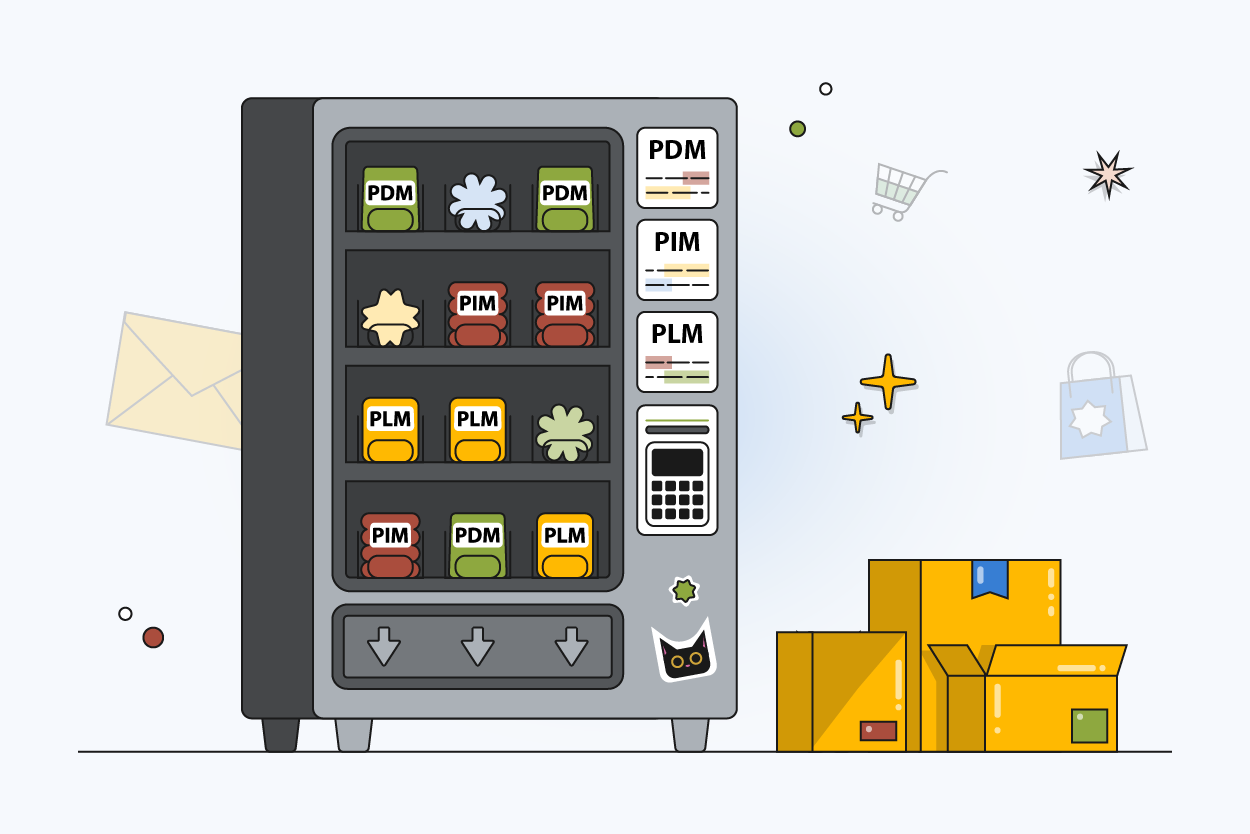PIM for eCommerce
Scale your online business and optimize product listings across all marketplaces with our comprehensive
PIM solution for eCommerce success.
Top PIM Systems for eCommerce Businesses
There are several PIM systems available in the market, each offering unique features and benefits. Some of the top PIM systems for eCommerce businesses include:
This PIM is known for speed and ease of use with advanced features, PIMinto allows businesses to centralize product data, improve product data quality, and distribute product information across various channels and directly connect eCommerce platforms to the PIM for headeless eCommerce.
This PIM solution offers robust features for managing product information, including data enrichment, catalog creation, and multi-channel distribution.
Salsify combines PIM capabilities with digital asset management (DAM) and eCommerce functionalities, offering a comprehensive solution for managing and publishing product content.
An open-source PIM solution that provides features for managing product data, digital assets, and user experiences across multiple channels.
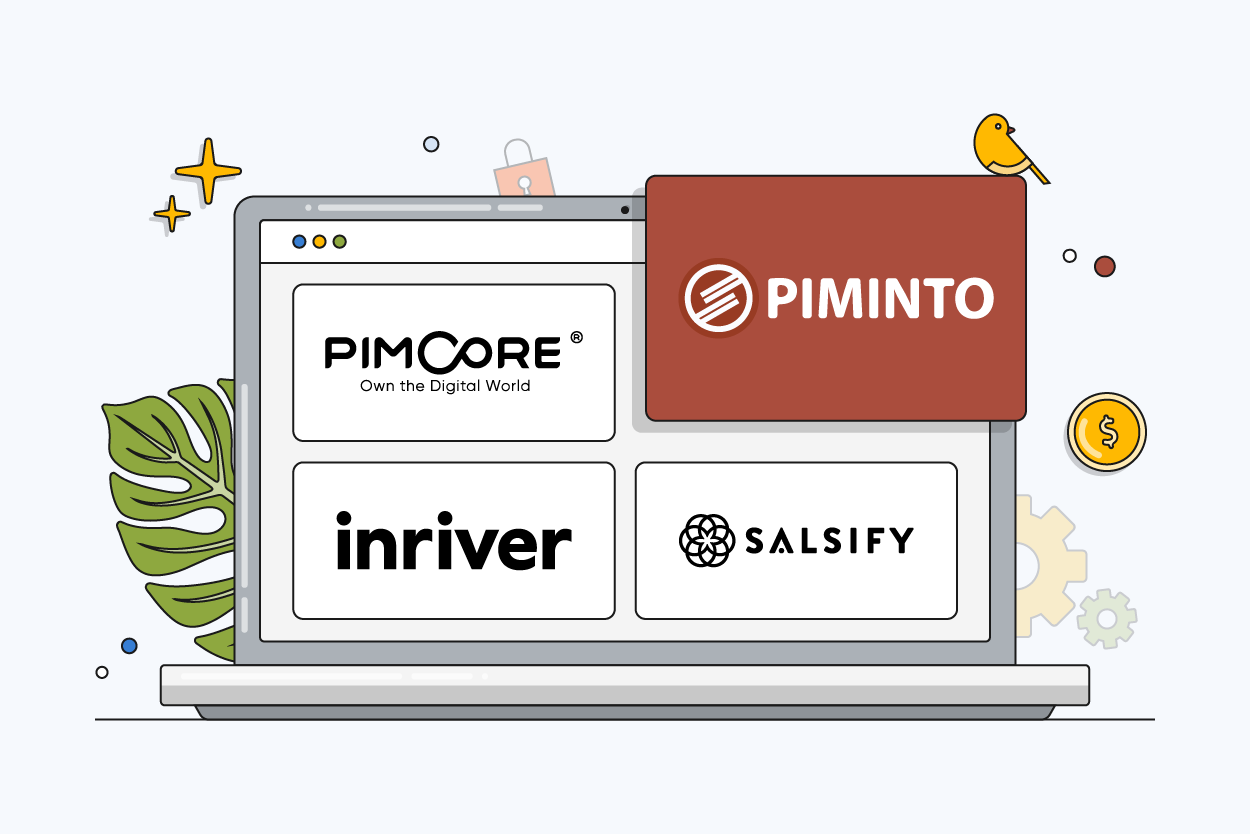
Benefits of a PIM Solution in eCommerce
Implementing a PIM solution can bring numerous benefits to eCommerce businesses:
A PIM system can automate and streamline the process of managing product data, saving time and reducing the risk of errors.
By providing accurate, comprehensive, and up-to-date product information, a PIM system can enhance the customer shopping experience and build customer trust.
With improved product data and a better customer experience, eCommerce businesses can drive more sales and increase their revenue.
As an eCommerce business grows and adds more products or sales channels, a PIM system can easily scale to meet these growing needs.
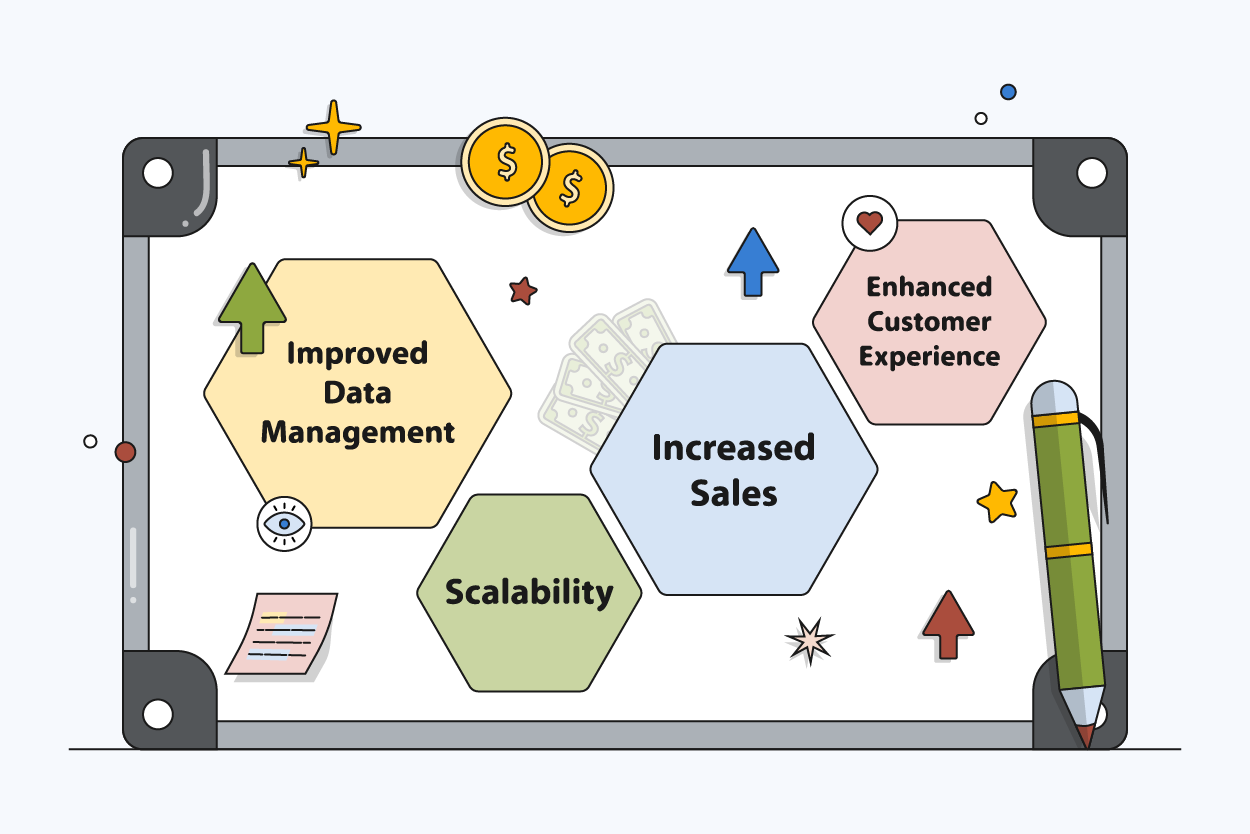
Implementing a PIM System in an eCommerce Business
Implementing a PIM system in an eCommerce business involves several key steps, including identifying business needs, selecting a PIM system that meets these needs, migrating existing product data to the new system, training staff on how to use the system, and integrating the PIM system with other business systems.
While implementing a PIM system can be a complex process, the benefits it can bring to an eCommerce business in terms of improved data management, enhanced customer experience, and increased sales make it a worthwhile investment.
A PIM system is a vital tool for eCommerce businesses. By providing a centralized platform for managing product information, a PIM system can help eCommerce businesses improve their operations, enhance the customer shopping experience, and drive business growth. As the eCommerce landscape continues to evolve, the role of PIM systems is set to become even more crucial. By understanding what a PIM system is, its benefits, and how to implement it, eCommerce businesses can make an informed decision and select a PIM system that best fits their needs.
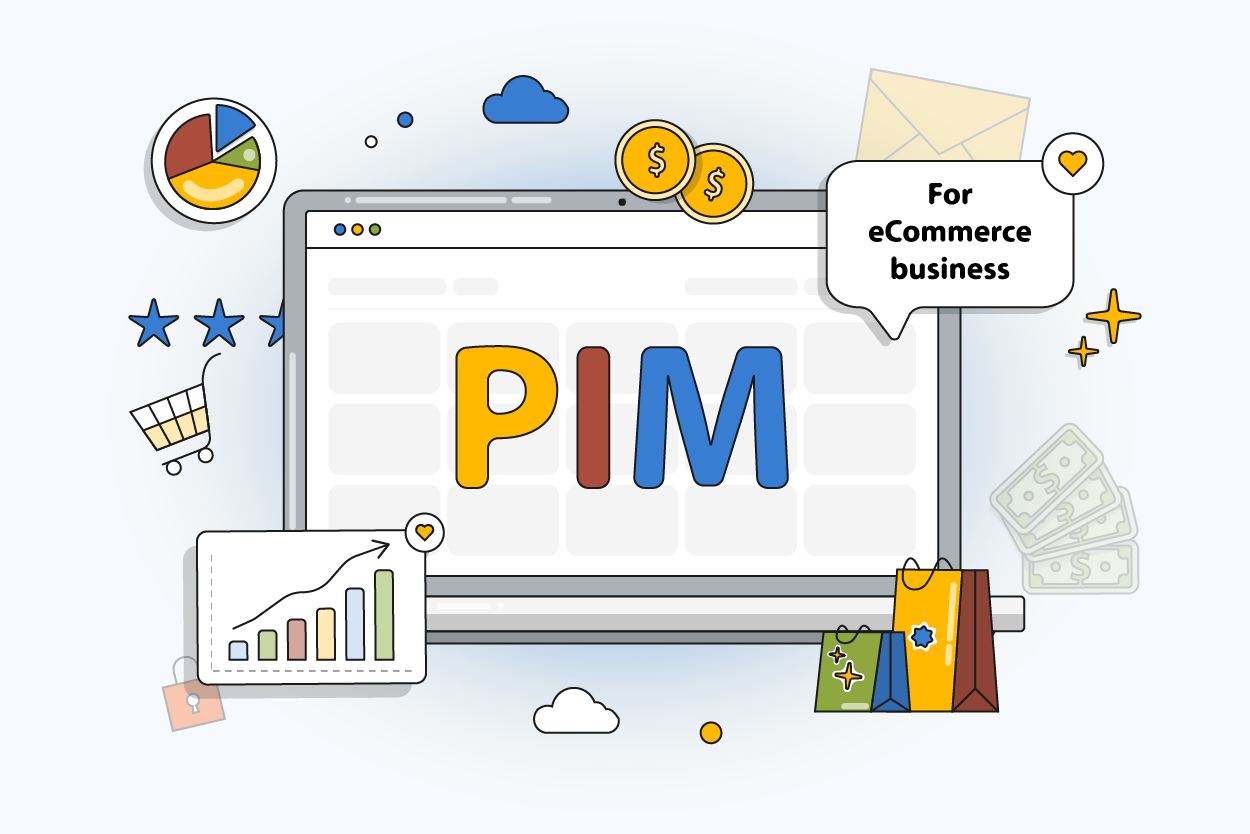
Companies that have a large number of products with complex structures can greatly benefit from a PIMS. Managing all the data for these products can be time-consuming and prone to errors. A PIMS can help in the easy handling of the data, making it more efficient and accurate.
If a product has several product description information details, complex data relationships, metadata, etc., handling these data can be made easier with a PIMS. It can compile the data efficiently and make it available in a uniform format, improving its quality.
Companies that are planning to reach out to several potential customers across the globe can benefit from a PIMS. It makes it easier to add features for providing the details in the required local language in a cost-effective way. PIMS makes it easier to perform activities like generating catalogs, price lists, etc.
PIMS can help strengthen a business in the eCommerce market. Companies aiming to grow in the eCommerce market should implement a PIMS in their business. It helps in managing the product details accurately and makes the process of launching new products faster and more efficient.
If a company needs to include data from different sources including suppliers that are resource-demanding, a PIMS will be useful for the organization for handling these data and then compiling it in a uniform format and improving its quality.
Ready for Better Product Data Management?
Transform your eCommerce operations with PIM for eCommerce solutions.
Data Enrichment
A PIM system can enrich product data by adding additional attributes, categorizing products, optimizing product descriptions for SEO, and more. This enriched product data can help improve product discoverability and attractiveness on various sales channels, potentially leading to increased sales.
Data Enrichment in a Product Information Management System (PIM) can take several forms, each designed to enhance the quality and usability of product data. Here are some examples:

Good organization into product categories improves filtering, making it easier for customers to find the desired item. For example, if your shop offers tech items, it’s good to have a distinction between smartphones and printers.
Customers may be looking for specific types of products within a category, like a waterproof phone, and certification can help with the eCommerce search enrichment.
This kind of information is especially critical for fashion items because it’s not just about the dimensions of a product, but how a piece of clothing or shoes will fit.
You can enrich eCommerce product data by using tags (e.g., blue jeans, party dress) or other such identifiers to ease the search for suitable items. This helps with improving product discovery and minimizing returns.
High-quality and relevant information about goods also means a customer is more likely to be satisfied with the purchase. For example, if you give precise dimensions for sofas, it’s more likely that a customer will choose the one that fits the spac
Information like age, occupation, purchasing power, and marital status can help you understand the shopping tendencies of your clientele. Consequently, this gives you a better idea of what information may be relevant. Similarly, mobility details can help you better understand your audience’s lifestyle preferences.
Product tags, rich descriptions, alt tags, and other attributes improve the search and consequently help search engines rank your pages. Especially, if you focus on customers’ search intent when defining these attributes.
If your products have a certificate of authenticity or are part of the EPREL database that ensures high manufacturing standards, or have a GTIN (Global Trade Item Number) that improves global search – you can show such compliance on the product pages.
Improved Customer Experience
By providing accurate, comprehensive, and up-to-date product information, a PIM system can enhance the customer shopping experience. Customers can make informed purchasing decisions, which can lead to increased customer satisfaction and loyalty.
A PIM system plays a crucial role in supporting eCommerce operations. By centralizing data management, supporting multi-channel distribution, enriching product data, integrating with other business systems, and improving the customer experience, a PIM system can help eCommerce businesses improve their operations and drive sales growth.
A Product Information Management System (PIM) can significantly improve the customer eCommerce experience in several ways. Here are some examples:

PIMS ensures that all vital data is always accessible, up-to-date, accurate, and consistent. This significantly reduces the online shopping cart abandonment rate and improves the purchasing experience.
By ensuring that product information is accurate and up-to-date, the customer can be confident that the item they receive will be what they expect, reducing the likelihood of returns and your expenses on managing returned goods.
PIM systems like PIMinto can have multable attributes that contain regional or language specific data. With live intgration with PIMinto eCommerce sites can utilize views to serve language and region specific data faster providing a better user experience with relevant data.
PIMS spreads product information consistently across multiple channels and business systems. This allows internal departments like sales, marketing, customer service, etc., to easily access credible information about stock status, upcoming deliveries, product availability, dimensions, etc.
PIM system not only enhances the final information but also streamlines business procedures. This means that you can have a faster time to market. Customers will therefore be able to purchase the newest and trendiest items in your store earlier than in others, resulting in contented and devoted customers.
An example will be the "Buy Online, Pick Up in Store" (BOPIS) retail option that allows customers to purchase items online and then pick them up at a physical store location. This provides them with the best of both worlds: the convenience of shopping online and the ability to physically examine the product before making a purchase.
PIM system can help improve the loading speed and ensure conversion rate optimization, which is crucial for a good customer experience. The longer it takes for a site to load, the more likely a user will bounce. PIM systems like PIMinto allow direct connections to PIMS data serving eCommerce result sets directly to user resulting in increased eCommerce site perfomance.
PIMS can ensure that your eCommerce website is responsive and fits different types of devices, providing an excellent user experience for mobile shoppers.
How PIM Transforms Your eCommerce User Experience
A Product Information Management (PIM) system can have a significant impact on an eCommerce website's user interface (UI) and the overall user experience. Here's how:
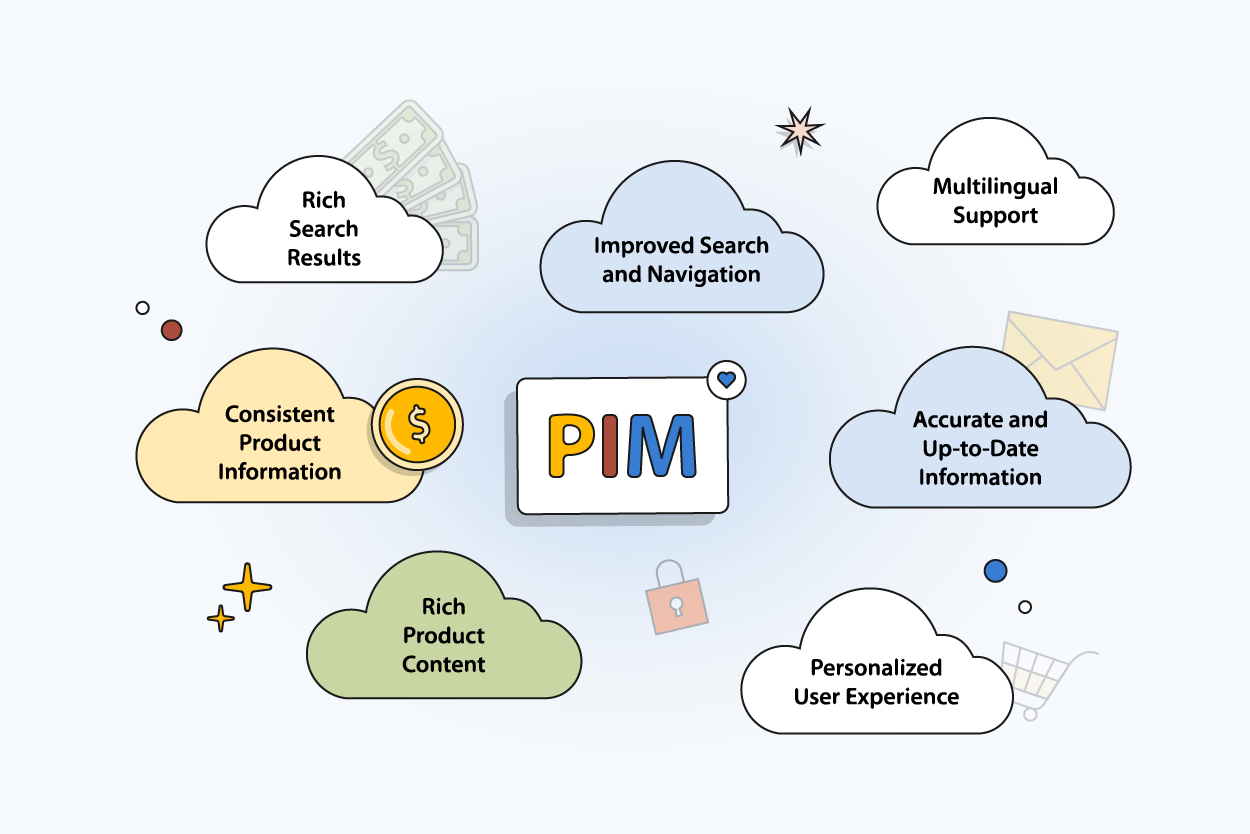
A PIM system ensures that all product information is consistent across all sales channels. This means that customers will see the same product descriptions, prices, images, and other information whether they're shopping on a desktop, mobile device, or through a mobile app. This consistency can enhance the user experience and build customer trust.
A PIM system can automatically update product information across all sales channels whenever changes are made. This ensures that customers always have access to the most accurate and up-to-date product information, which can help them make informed purchasing decisions.
A PIM system can manage and distribute rich product content, such as high-resolution images, videos, and 3D models. This rich content can enhance the user interface of an eCommerce website, making it more engaging and informative for customers.
By managing product attributes and categories, a PIM system can improve the search and navigation features of an eCommerce website. This can make it easier for customers to find what they're looking for, enhancing the user experience.
Some PIM systems can integrate with other systems to provide personalized product recommendations based on customer behavior and preferences. This can enhance the user interface by showing customers products that are relevant to them.
For eCommerce businesses that operate in multiple countries, a PIM system can manage product information in multiple languages. This can enhance the user interface for international customers, ensuring that they can access product information in their preferred language.
Advanced PIM systems like PIMinto offer direct API integration with live data serving. This means changes in the PIM structure instantly impact product pages and search results, ensuring customers always see the most current information and relevant search results.
FAQ
What are the risks of not having a PIM?
Product information will be poorly organized and incorrect, as well as have gaps. Poor product data has a negative impact on the sales cycles because customers are not able to make accurate decisions about products. This can result in lower sales and higher product returns.
What does PIM stand for in ecommerce?
PIM stands for Product Information Management. A PIM serves as the backbone for businesses aiming to provide accurate, consistent, and up-to-date product information across various channels. These systems are fundamentally designed to offer a flexible and organized way to store structured product data. This includes critical data points like product names, descriptions, prices, images, availability status, technical specifications, and much more.
What factors determine the need for implementing a PIM system in my business?
- Processing huge amounts of data.
- Management of huge volumes of different types of digital assets.
- Tasks needed manual labor.
- Disorganization of product catalogs.
- Inaccuracy and inconsistency of product information.
- Handling requirements for multiple sales channels.
Is PIM functionality mandatory for every eCommerce implementation?
PIMinto allows businesses to centralize product data, improve product data quality, and distribute product information across various channels and directly connect eCommerce platforms to the PIM for headeless eCommerce.
Do you need a PIM with Shopify?
Shopify is a commerce system to build an online store. PIMinto PIM will help you manage various product information as well as upload and update needed products to your Shopify store. PIMinto PIM has an automated process of keeping your Shopify product information up to date.
